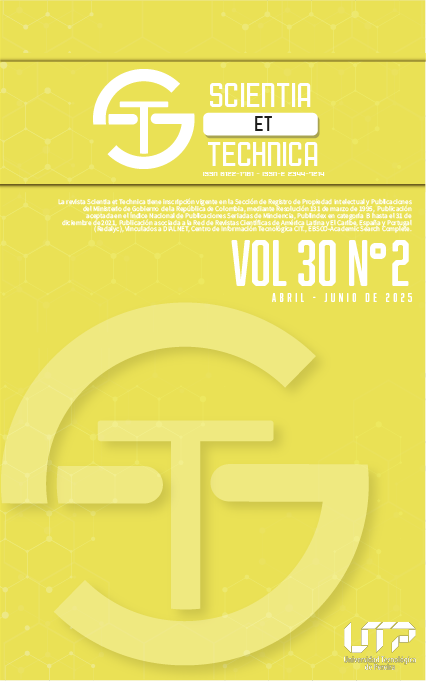Mathematical Model for Analyzing the Fluorescence Emission of Biological Tissue
DOI:
https://doi.org/10.22517/23447214.25544Palabras clave:
Espectroscopía óptica de fluorescencia, Tejido precanceroso, Modelo matemáticoResumen
Optical emission fluorescence spectroscopy allows for determining biochemical changes in normal and pathological biological tissue in-vivo or in biopsies. The aim of the study is to analyze the chemical and physical properties of the cervix tissue. The mathematical model is presented to examine and observe the fluorescence emission of the tissue. In the precancerous state development, the optical properties of the tissue can be altered not only by the light dispersion and the fluorescence increase in the epithelium but for the fluorescence reduction in the stroma. Beer-Lambert Law was used to describe light propagation in the tissues. Four components of cervix tissue were identified: collagen, elastin, NADH, and flavins. It was possible to generate support for the medical diagnosis of precancerous lesions on cervix tissue by applying the model with developed algorithms. A good fit of the spectrum was obtained and predictions to the model were properly made, with significative differences for each fluorophore parameter, especially on collagen and NADH.
Descargas
Citas
K. Duraisamy, “Methods of Detecting Cervical Cancer”, Advances in Biological Research, vol 4, no 4, pp. 226-232, 2011.
J. Cordero Martínez, “Citologías alteradas y algunos factores de riesgo para el cáncer cervicouterino” Revista Cubana de Obstetricia y Ginecología, vol. 41, no. 4, 2015
A. A. Angeleri, “Calidad de la toma exo-cervical en la prevención del cáncer de cuello uterino”, Medicina (Buenos Aires), vol. 77, no. 6, pp. 512-514, 2017
M. F. S. Nava, “Certeza diagnóstica de la colposcopia, citología e histología de las lesiones intraepiteliales del cérvix” Médica Sur, vol. 20, no. 2, pp. 95-99, 2018.
J. E. Samperio Calderón, “Eficacia de las pruebas diagnósticas del Cáncer Cervicouterino y Virus del Papiloma Humano”, JONNPR, VOL. 4, NO. 5, PP. 551-566, 2015. DOI: https://doi.org/10.19230/jonnpr.2953
M. A. Corti, “Aplicación de técnicas ópticas sobre tejidos y fluidos corporales para el diagnóstico no invasivo de enfermedades oncológicas”, Ph. D. Dissertation, Universidad Nacional de la Plata, 2020.
K. Pandey, “Fluorescence Spectroscopy: A New Approach in Cervical Cancer”, The Journal of Obstetrics and Gynecology of India, vol 62, pp. 432-436, 2012. DOI: 10.1007/s13224-012-0298-6
A. Sordillo, “Optical spectral fingerprints of tissue from patients with different breast cancer histologies using a novel fluorescence spectroscopy device”, Technology in cancer research and treatment, vol. 12, no. 5, pp. 455-461, 2013. DOI: 10.7785/tcrt.2012.500330
L. Escuero, “Principio de fluorescencia”, Master’s thesis, Universidad Complutense, Facultad de Farmacia, 2018.
I. Tuñón, “Espectroscopia para el estudio de la materia”, Universidad de Valencia, Tech. Rep., 2014.
D. Skoog. Principios de Análisis Instrumental. ESPAÑA: 5ª. McGraw Hill, 2001.
A. López, “Sistema para mediar la absorbancia (espectrofotómetro)”, Master’s tesis, Tecnológico Nacional de México, Instituto de Tuxla Gutierrez, 2015.
B. Segura. “Espectroscopía óptica de fluorescencia aplicada al soporte de diagnóstico médico de precánceres de tejido de cuello uterino”, Tesis de Doctorado, Universidad Nacional de Colombia, Departamento de Ingeniería Eléctrica, Electrónica y Computación, 2009.
N. Díaz. “Espectrofotometría: Espectros de absorción y cuantificación colorimétrica de biomoléculas”, Campus Universitario de Rabales, Tech. Rep., 2010.
B. Valeur, Molecular fluorescence: principles and applications. John Wiley & Sons, 2012. Doi: 10.1002/9783527650002
K. Vishwanath, “Fluorescence spectroscopy in vivo”. Encyclopedia of Analytical Chemistry: Applications, Theory and Instrumentation, 2011.
A. Mahadevan, “Study of the fluorescence properties of normal and neoplastic human cervical tissue”, Lasers in surgery and medicine, vol. 13, no. 6, pp. 647-655, 1993. DOI: 10.1002/lsm.1900130609
Descargas
-
Vistas(Views): 236
- PDF Descargas(Downloads): 149
Publicado
Cómo citar
Número
Sección
Licencia
Derechos de autor 2025 Scientia et Technica

Esta obra está bajo una licencia internacional Creative Commons Atribución-NoComercial-CompartirIgual 4.0.
Derechos de autor y licencias
La revista es de acceso abierto gratuito y sus artículos se publican bajo la licencia Creative Commons Atribución/Reconocimiento-No Comercial-Compartir bajo los mismos términos 4.0 Internacional — CC BY-NC-SA 4.0.
Los autores de un artículo aceptado para publicación cederán la totalidad de los derechos patrimoniales a la Universidad Tecnológica de Pereira de manera gratuita, teniendo en cuenta lo siguiente: En caso de que el trabajo presentado sea aprobado para su publicación, los autores deben autorizar de manera ilimitada en el tiempo, a la revista para que pueda reproducirlo, editarlo, distribuirlo, exhibirlo y comunicarlo en cualquier lugar, ya sea por medios impresos, electrónicos, bases de datos, repositorios, discos ópticos, Internet o cualquier otro medio requerido.
Los cedentes mediante contrato CESIÓN DE DERECHOS PATRIMONIALES declaran que todo el material que forma parte del artículo está totalmente libre de derechos de autor de terceros y, por lo tanto, se hacen responsables de cualquier litigio o reclamación relacionada o reclamación relacionada con derechos de propiedad intelectual, exonerando de toda responsabilidad a la Universidad Tecnológica de Pereira (entidad editora) y a su revista Scientia et Technica. De igual forma, los autores aceptan que el trabajo que se presenta sea distribuido en acceso abierto gratuito, resguardando los derechos de autor bajo la licencia Creative Commons Atribución/Reconocimiento-No Comercial- Compartir bajo los mismos términos 4.0 Internacional — CC BY-NC-SA 4.0.
https://creativecommons.org/licenses/by-nc-sa/4.0/
A los autores, la revista Scientia et Technica tiene la obligación de respetarle los derechos morales (artículo 30 de la Ley 23 de 1982 del Gobierno Colombiano) que se les debe reconocen a estos la paternidad de la obra, el derecho a la integridad y el derecho de divulgación. Estos no se pueden ceder ni renunciar.



